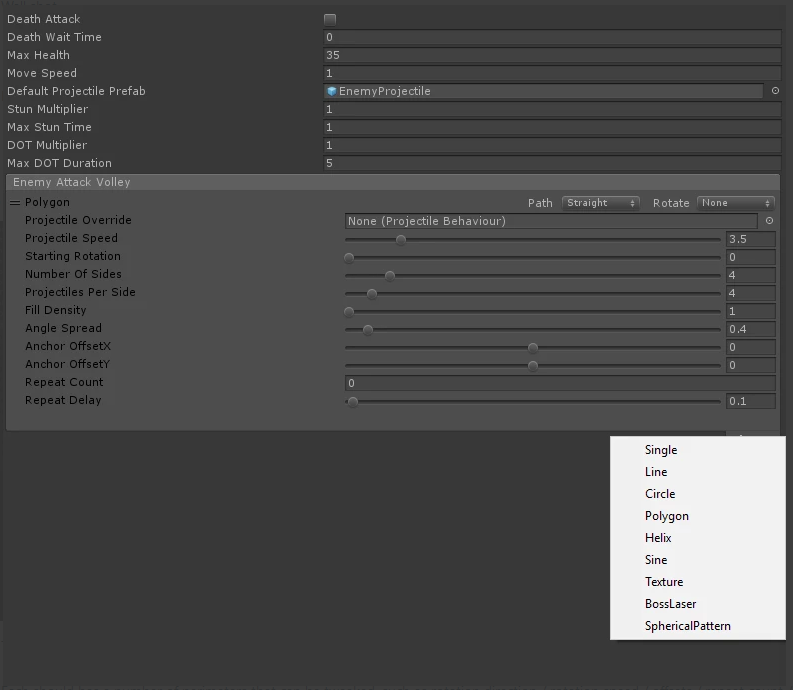Blasters of the Universe
Released 2017
Studio: Secret Location Inc
Platforms: Steam / Oculus Home / Viveport / PlayStation VR
My Role: Lead Game Designer & Lead Level Designer
Engine: Unity
Metacritic Score: 76
Summary of Contributions
I was the Lead Game Designer for Blasters of the Universe. As such, I worked on the game from early concept through to final release. This work included writing GDDs, contributing to funding applications, building prototypes, designing gameplay systems, weapon functionality, enemy behavior design, bullet pattern creation tools design, level design, enemy spawning tool design, boss battle design, UI & UX, progression systems, and tutorial design.
Blasters of the Universe is the first of its kind, bringing the bullet hell genre into first person VR. Intense gameplay is heavily reliant on physical movement, requiring the player to duck, dodge, twist, turn, and maneuver their way through tons of enemies and hundreds of bullets.
There were many design challenges to overcome on this title. Translating the bullet hell genre into VR required the creation of a complex 3D bullet pattern system. I designed this system and the patterns that it generated. This was combined with a enemy spawning system I designed that allowed me to carefully plan out enemy movement and patterns to push players to fully utilize their room scale play-space. This was a ‘stand in place’ style VR game, as in the early days of VR locomotion was fairly uncommon.
I designed a unique boss battle for each level. Each had their own systems to push players to the limits of their ability. As players progressed, they’d unlock new items and upgrades for their guns that could be individually equipped so players could create a gun that perfectly fit their own personal play style.
Reception
“I mostly played Blasters of the Universe in Casual mode. Look, I’m not proud of that. But there’s hard, and then there’s VR bullet hell hard, and I’m not in the best shape. Still sore two days later, I can’t help but look back on my time with the game fondly. Heck, it might even become part of my regular exercise regimen. Blasters of the Universe is intense, frantic, polished, and an excellent showcase for what makes VR a special technology.”
— BRANDEN JOHNSON - cogconnected.com
“Blasters had me moving faster than any VR game I’ve played in some time: I was often throwing myself to the floor or diving onto the couch next to me to avoid bullets and at one point I even narrowly dodged an attack with a well-timed hop. Suffice to say it’s a hearty workout that you’ll need to make space for, but if you have the energy and the room it can be a pulse-pounding good time.”
— JAMIE FELTHAM - uploadvr.com
“Blasters of the Universe is an absolute blast to play with silky smooth motion control and headset tracking that allows for precise shots to be pulled off with ease. The 80s cartoon style visuals, combined with the trance music, create a charmingly frantic environment for a bullet hell shooter to be set. Although its runtime is short lived, the quality of its gameplay makes Blasters of the Universe a very worthwhile venture.”
— Simon Fitzgerald - pushsquare.com
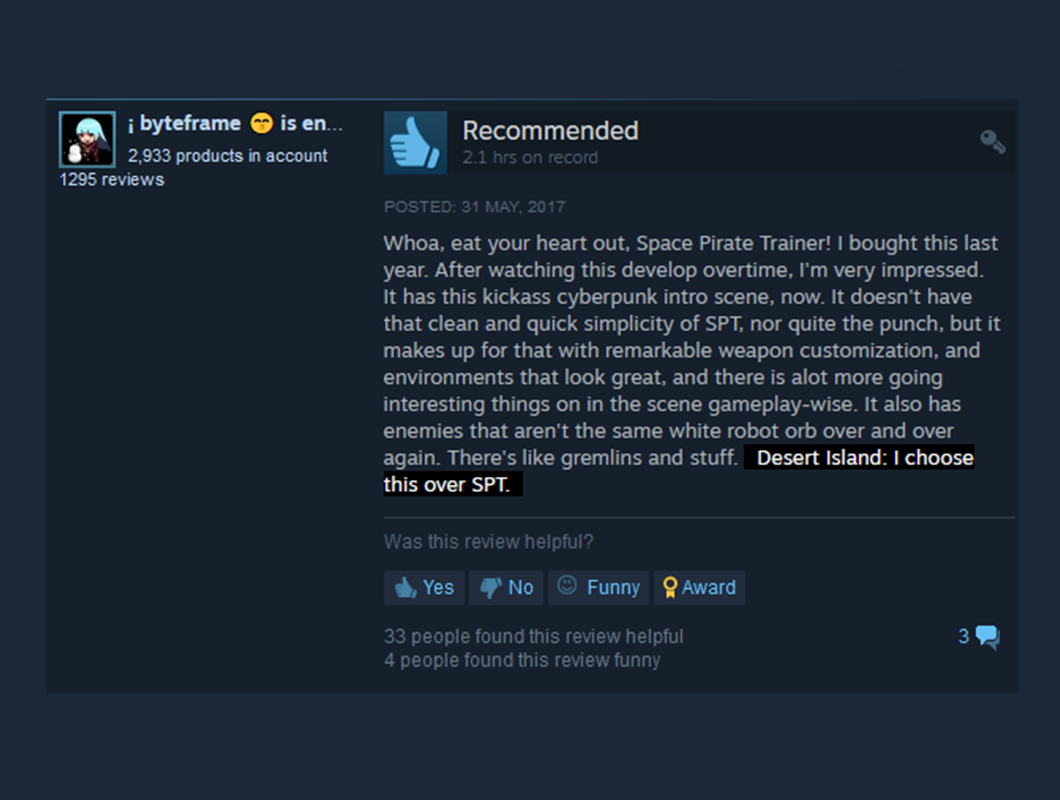
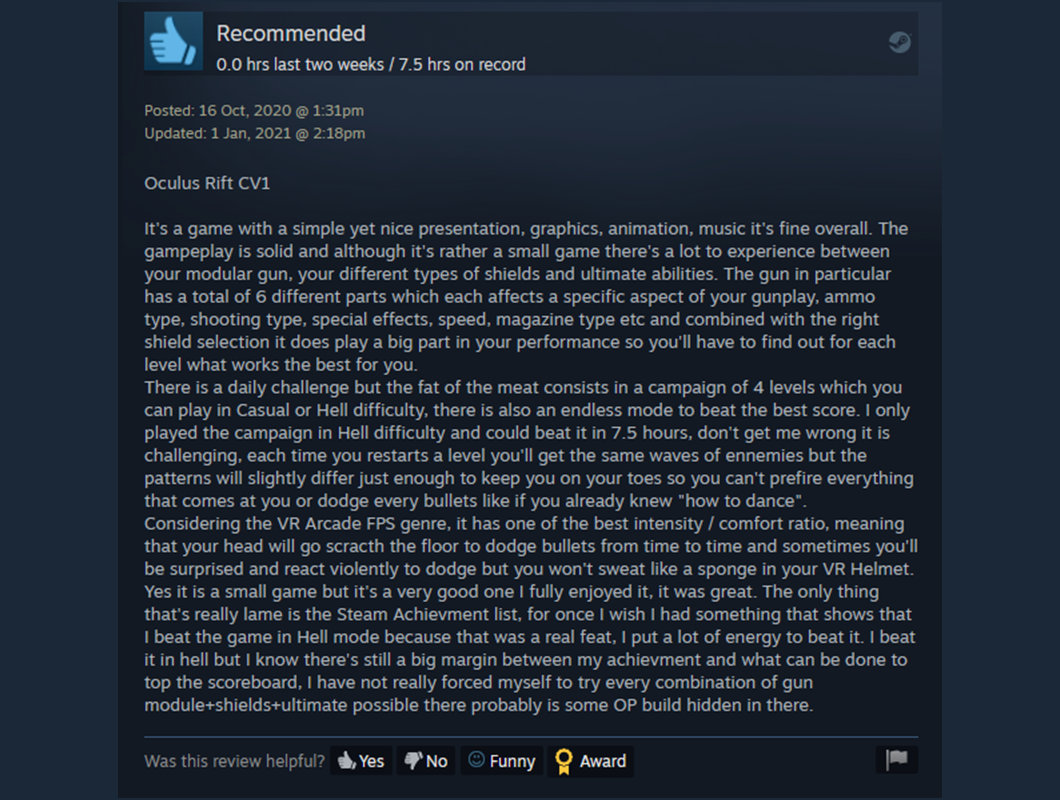
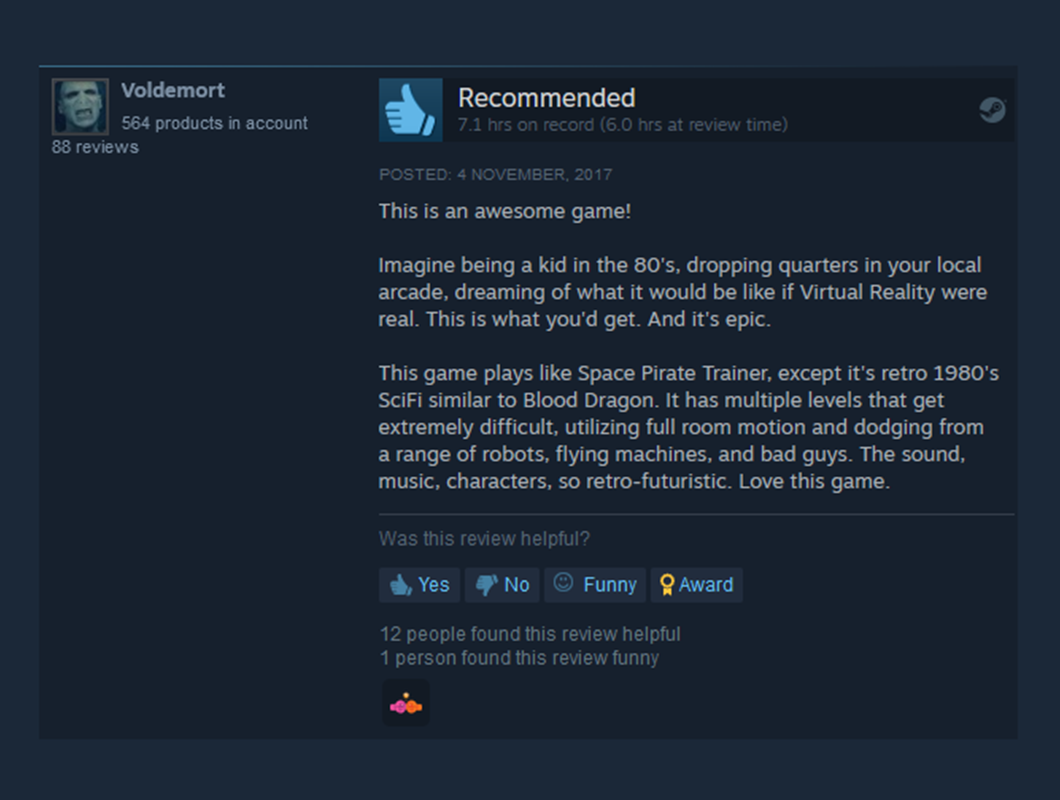
Bullet Hell Pattern Design
-
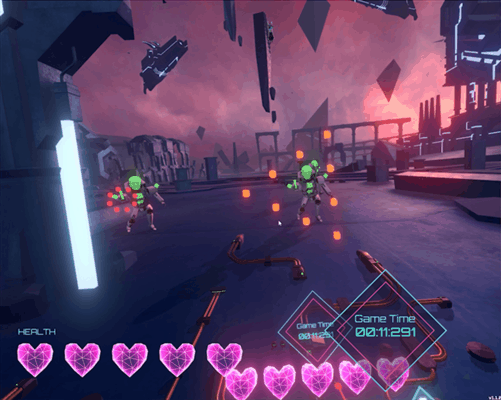
Indirect Patterns
Indirect patterns are the simplest for players to deal with. The center of the pattern is empty and the players only take damage if they are hit in the head. This means sometimes its best to remain still and let the bullets sail past you.
-
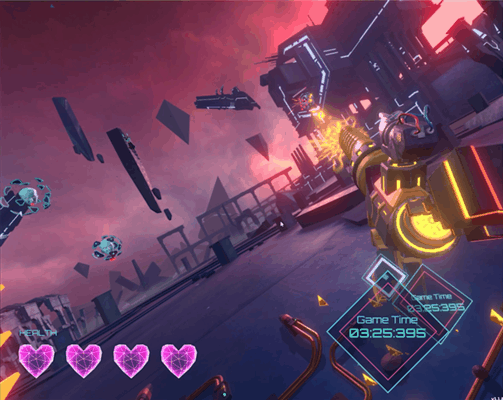
Direct Patterns
When a bullet pattern is fired, it’s always at the players head. When we fired ‘direct’ patterns at the players, if they do not move they will be hit. The balance between these two core patterns forms the base of how we manage difficulty.
-
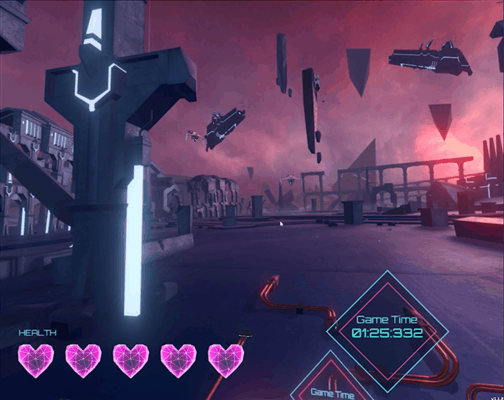
Repeating Patterns
Any pattern can be set to repeat. This means we can turn a simple circle pattern into a tube. We could use the repetition to create unique 3D patterns of bullets.
Pattern Building Tool
We build the bullet pattern creation tool to allow us to control every aspect of a pattern. Single bullets, lines, circles, polygons, helix, sine, and even texture driven. Each of these could be then added into a sequence with timing management, allowing us to create extremely complex patterns from very simple elements.
This feature was co-designed between myself and our talented programming team to ensure that all the design goals were met. This was a tool that saw constant development over the life of the game, as the more we built with it the more ideas we came up with to add to the bullet pattern system. Each new element added was detailed in design documents, scoped, and set into our overall schedule to ensure we were able to deliver on time while still allowing flexibility and iteration as the project evolved.

